How to Create Killer Content for Your Ecommerce Site
“Of course I want to build an awesome content site, I just can't find the time or the expert to do it!”
So you tell yourself for the thousandth time since you launched your business. Meanwhile, you're spending way too much on advertising costs, your brand awareness is going nowhere, and your competitors are ranking on Google and gobbling up the market share.
If only there was a guide that outlined everything you needed to do to build a content site from scratch, even without an expert on board.
Well, consider it done.
Topics Covered
- How We Grew our Content Site Without Subject Matter Experts
- Why Investing in Great Content is Vital in Growing Your Business
- What Makes Content Rank
- Knowing Your Audience and Writing with Authenticity
- Establishing Your Brand's Tone of Voice
- Selecting Relevant Topics
- Effective Keyword Research Strategies
- Content Types and Frameworks
- Actionable Tips in Putting Together a Stellar Article
How We Grew Tactical.com From Scratch—Without Any Experts
Terran is home to multiple brands and content sites. One of our sites, Tactical.com, is a blog dedicated to survivalism, outdoor activities, and gear reviews.
Related Listening: E360: How Content Can Give You A Leg Up In Ecommerce
The traffic from this site is funneled to our ecommerce brand, TAC9ER, which sells high-quality outdoor and survival products like trekking poles, flashlights, multitool shovels, and the like.
Since we first created content for Tactical in the summer of 2017, we’ve so far:
- Had 120k visitors, 230k sessions, and 306k pageviews
- Published 126 articles, some of which are landing on Google’s first page
- Ranked for 1,700 organic keywords
- Gained 2,100 backlinks
- Enjoyed 05:25 average time on page (as of 01082020)
- Gained 8,662 email subscribers
- Reached 4,562 Facebook likes
- Saved thousands of dollars in advertising and PPC costs
- Generated $147k in gross sales for Tac9er
Not crazy numbers by a long shot, but not too shabby for a beginning content site either—especially since none of our writers are experts in this niche.
Let me say that again:
None of our writers are experts in this niche. They only like the outdoors if the indoors are nearby. Camping or hiking or hoarding freeze-dried food aren’t their thing, and yet, they continue to produce valuable content that resonates with a tough audience.
Which begs the question:
How do you create content that will consistently rank and bring in traffic, even if you're not an expert?
We can break it down into four ways:
- We made sure everything we published was valuable, thoroughly researched and of the highest quality
- We had a distinct voice that resonated with our audience
- We followed a solid topic and keyword research process
- We invested in excellent writers who can execute the first three steps to a T
We’ll break these key points into actionable strategies that you can replicate and apply to your own sites and blogs.
Before we dive into that, though, here’s a quick reminder on why we’re doing this in the first place:
Why Invest In Great Content, Anyway?
Between Amazon's constant bullying of its third-party sellers, its virtually non-existent customer service, and the threat of Chinese sellers nabbing products from stores, you've got more than a handful of reasons to seriously invest in your own site instead of relying on a single platform.
You don’t wanna put your eggs in one basket, especially if said basket can shut your business down in a snap.
At the same time, you also want to be able to grow your business sustainably and remain relevant for years to come. But how do you do that when e-commerce and the digital marketing field is changing at a break-neck speed and the strategies that might be working today (ie social media ads, PPC, influencer marketing) might not work tomorrow?
Content marketing can cover these bases and more.
When done right, a solid content marketing plan can help you:
- Acquire leads organically
- Save serious cash in advertising costs
- Boost brand awareness and establish your business as a household name
- Nurture your relationship with customers
- Gain independence from platforms like Amazon
Reaping the benefits of content marketing doesn’t happen overnight— which is why you should start doing it today, if you haven’t already.
The Anatomy Of Great Content
Back in ye olde days of the Internet, one could get away with simply jamming as many keywords into a 300-word blog post to rank on page one.
But times have changed.
Search engines like Google have gotten exceptionally smarter since. They’re now designed to be more in-tune with their users— real humans with real questions looking for real answers. In order for your content to rank (and for you to consequently get those leads), you have to commit to create trustworthy content that provides value to your audience.
So, What Makes Content Awesome?
Google uses about 200 ranking factors to determine if a post is worthy of page one or not, but we obviously won't discuss all of those. Instead, let's focus on content.
For your content to have a fighting chance at ranking, it should:
- Answer the user's inquiry and intent
- Be engaging enough for people to stay on the page and not bounce out
- Have Expertise, Authority, and Trustworthiness, as per Google's guidelines
Other factors that affect your rankings
- Article length – comprehensive articles with a minimum of 1.5k words do really well
- Readability – must be formatted so that it’s easy to read and digest
- Quick load time – people bounce out of a page that doesn't load within 3 seconds
- Mobile-friendliness – since half of search queries come from a mobile device, Google puts a premium on sites that are mobile-friendly
- Freshness – articles that are regularly updated have a higher chance of ranking
The logic behind these guidelines is pretty simple: when you create content that satisfies these criteria, your audience will stay on your page. If you’ve got internal links that lead people to other relevant content on your site, much better. When they don’t bounce out, Google's algorithm will think: “Hey, users seem to find this content valuable. This must be good content, so more people should see it. I should rank it higher.”
Creating valuable content will also get you more backlinks, which solidifies your reputation as a trustworthy and credible source of information.
It’s an oversimplified way of saying it but that’s basically how you can get yourself a much-needed boost from Google.
Now, outlining your path to Google's first page is the easy part. Actually creating content? Not so much, but it’s not impossible either.
Here are the tried and tested strategies that we employed in growing our sites from scratch:
Phase 1: Laying Out The Foundations
We can’t stress this enough: you need a good foundation for your content marketing strategy. In this section, you’ll learn how to get into your audience’s headspace and create content in a voice that they will recognise.
Knowing your audience
First rule of content creation: you have to know who you're talking to. Based on our experience, brands who don’t know their audience become the toughest ones to market, so it’s crucial that you know your audience. If you try to cater to everyone, your message will get lost.
That being said, here are the following tools we use to help us get to know our audience better:
Demographics and Psychographics
Demographics like the audience's age, location, gender, and status will give you a general idea of who you’re talking to. This data is also useful for ad targeting later along the way, but don't stop there. Take the extra step and focus on psychographics, too.
Psychographics are the attitudes, values, pain points, hobbies, spending habits, and information sources of your audience. This data helps you create a more fleshed-out buyer persona.
Knowing what makes them tick, their values and difficulties also helps you zero in on the topics you'll later write about and set the tone of voice you'll use when creating content. Take it from our writers: it’s easier to write for a persona with character versus a bunch of stats and numbers.
Creating A Customer Avatar
The good thing is that you can have both demographics and psychographics all laid out in one place when you create a customer avatar. This is the format that we commonly use in all of Terran's brands:
For Tactical, we know that our audience is interested and may already be well-versed about prepping, so we go out of our way to provide information that goes beyond the basics. These folks value preparedness and foresight, so we adopt a pragmatic, straight-forward tone, careful never to make fun of or undermine these values.
We also know that despite popular opinion, most within the prepper circle don't like products and info endorsed by “celebrity preppers”, so we try to avoid mentioning any popular personalities on the site, focusing instead on small but reliable channels and sources.
It's these “little things” that will give your content value and personality later along the way.
Consuming the same information diet as your audience helps you get into their headspace. It’s a pretty good way to research topics, too, but we’ll get to that later.
Aside from their values, pain points, and role in the decision-making process, we also include a section for the content that they consume, and where they get advice and information. For example, if there's a particular book, TV show, or Youtube channel that our audiences enjoy, you best believe we've read or watched those books or programs, too, just to get some perspective.
Filling out a customer avatar and going into a deep dive of your audience's psyche may sound basic and tedious at the same time, but please, don't skip this part. It's an important foundation to your entire content marketing strategy.
Establishing Your Brand's Tone of Voice
Now that you know who you’re talking to, it's time to develop a distinct voice that they can relate to.
See, anyone can string words together and write an article, but it takes dedication to write with a distinct voice. That distinct voice gains your audience’s trust and makes them stay, so make sure that your tone and language as a brand resonates with your potential customers.
Having an established tone of voice for your brand also allows you to be memorable. People would be more willing to buy from a brand that sounds like a friend, versus a brand that sounds like a cardboard cutout.
Since Terran handles a number of brands across different niches, it's important for us to employ different voices for each of our brands.
A quick sample on how each of our brands says hello
- Tactical: ‘Sup bud, long time no see.
- Wildbaby: Hey momma! How are you and your little humans?
- Icewraps: Heard you pulled a muscle. Need a hand?
What does your brand's voice sound like?
Is it factual and straight-forward? Sweet and gushing? Laid-back? Funny? Sarcastic?
What kind of words will you use? Will you be matter-of-fact and official? Or do you have room for a bit of fun and colloquialisms?
Use your customer avatar to craft a brand voice that:
- Your audience will listen to
- Matches with their values
- Aligns with your brand’s positioning and purpose
Create A Brand Guide
If you want to take it a step further, create a brand book or style guide.
As the name suggests, this serves as a visual guide on how the brand looks and sounds like.
Your brand guide should include:
- Your brand story
- Key terms associated with your brand
- Mission statement
- Brand voice
- Guidelines and applications for your logo, typography, and photography
All of Terran's brands have a brand book and it has been extremely helpful in creating a consistent identity for our brands. This has been pivotal in making sure that the content we create agrees with what the brand stands for and what our audience finds valuable. It also makes onboarding new team members easier, since everything can be found in one resource.
Phase 2: Influencers, Topics, and Keyword Research
Once you’ve identified who your brand is and who you’re talking to, it’s time to determine what you’re going to write about. In this phase, we'll walk you through the basics of topic and keyword research, as well as the importance of knowing your brand's influencers.
Knowing Your Niche Influencers For Topics And Link Opportunities
Before picking out topics and keywords, you must first know your niche influencers. These influencers are the people who hold a lot of sway within your niche, the ones with an established identity.
Brian Dean from Backlinko calls these influencers your “Linkreators”. Identifying your Linkreators is so important that Dean even goes to say that the majority of your content should be made for these folks.
Counterintuitive? Sounds like it, but hear us out.
Your niche influencers and general audience are most likely interested in the same topics. The only difference is that unlike your regular folks, these influencers have authority and enjoy a wider following. In other words, their shares carry weight.
Now, what happens when you create content around topics that appeal to these Linkreators? What happens when these Linkreators share YOUR content to their audience?
By choosing topics that are naturally interesting to your niche influencers, you're increasing your chances of getting high-quality backlinks or shares, which in turn helps you boost your rankings on search. Simple, but pretty effective.
Here are are other benefits of finding your site's niche influencers:
- They're a good source of knowing which topics work and what don't
- They’re already employing knowing effective frameworks and formats
- You can run their sites on Ahrefs and check out their backlink profiles and discover other influencers and/or direct competitors
A reminder though: you’re not looking for niche influencers so you could plagiarize their work. That’s not how this cookie crumbles and if you’re even considering that, you’re in for a lot of trouble. Google doesn’t look too kindly on people who leech off others’ works. Knowing your influencers and the content that they prefer is essentially a springboard for you to create original content.
That being said, how do you look for these Linkreators or niche influencers?
How To Search For Your Niche Influencers
Looking for your niche influencers literally takes a couple of clicks on Google. Here’s what you do:
- Key in a broad topic (i.e. preparedness, ice wraps, or coloring books) on search.
- The top results that aren't direct competitors or paid ads are the influencers you're looking for.
Easy peasy, right?
To get more comprehensive results, though, you can use a keyword research tool like Ahrefs. Here are the steps on how to do that:
- Enter your broad keywords into the tool's keyword explorer feature.
- On the left side of the screen, you'll see the tab “traffic share”.
- Click “by domains” and you'll see the percentage of traffic each domain actually gets.
Collate a list of your influencers and keep them handy, because you'll be using them as reference a lot in the next couple of phases.
Using Your List Of Influencers To Find Topics That Work
Now that you’ve got a solid list of influencers, it’s time to find out which topics they (and their audience) find valuable. Doing so is pretty easy with a tool like Ahrefs. Here’s what you do:
- Whip out your list of niche influencers.
- Run these URLs on Ahref’s Site Explorer feature
- On the left-hand corner, click on Top Pages to pull up the most popular pages and articles of the site.
It will then show the site’s top broad keywords and topics. These are the topics that your niche influencers (and their followers) are interested in.
Now all you have left to do is to find medium to long-tail keywords for each topic (we’ll discuss those in a bit) and use these as a springboard for your own content. It’s really as simple as that.
Other Ways To Find Topics: LSI, Youtube, and Forums
LSI keywords and Google’s very own auto-complete feature are also gold mines for proven topics and questions. Just key in a broad topic on the search and check out the top related searches at the very bottom of the search results.
Youtube’s search bar also works the same way. Being one of the world’s largest search engines (second only to its cousin Google, in fact), Youtube’s auto suggestions offer a wealth of topics that you can take advantage of.
Lastly, you can also check out forums like Reddit for frequently asked questions or go over the comments section of a popular blog post. What we love about these resources is that your audience is already supplying the topics for you by asking questions. All you have to do is to provide the answers. The info that you can find on forums and comments sections make for excellent sub-topics.
Creating Topic Maps
Now, there are some instances where you feel like you already have great topics in mind, but just can’t put a finger to what they actually are. Maybe you’ve run some prospective topics on a keyword research tool but they’re not giving very satisfactory results. Or perhaps you’re really excited to start writing but have too many ideas floating around your head. You need to pin those ideas down before they start floating away. To do this, we create topic maps.
A topic map is a brainstorming method we use to generate a web of interconnected ideas. To create a topic map:
- Write down one broad topic and create branches of subtopics around it.
- Then you create more subtopics under the subtopics until you get a network of ideas.
A common topic map for Tactical can look like this:
But don’t stop there. After you’ve organized your ideas, run these topics on a research tool and find the right keywords for your content.
Now, how do you know if those keywords are the right keywords? Good question. Find out the answers below.
Keyword Research
Now that we’ve got tried-and-tested topics, let’s build keywords around them. When you’re starting out, you want to stick to medium to long-tail keywords.
Unlike their short-tail counterparts, medium to long tail keywords are specific phrases made up of two to three keywords. Using these specific keywords gives you at least three benefits:
- There’s less competition around them
- They help you narrow your audience down
- They’re better at satisfying your users’ search intent
Again, a keyword research tool like Ahrefs is indispensable in this stage. Here’s what you do:
Key in a broad topic on their Keyword Explorer feature. In this example, we’re using the broad keyword “hiking”:
Hitting enter will give you all the keywords related to the topic. Broad topics are of course quite competitive and therefore hard to rank for, but you can actually filter these results to show keywords or phrases based on their difficulty level and search volume.
Per standard, we target relevant keywords that have a maximum keyword difficulty (KD) score of 20 and search volume (SV) of 1k upwards.
Putting in these metrics means that the keywords we’re targeting are relatively easy to rank for (low KD) but have a substantial amount of organic queries (high SV). From there, you can customize your search to show results with matching phrases, having the same terms, are questions, and so on, by clicking on the options on the left-hand corner.
Once you’ve selected the most relevant keywords for your article, sprinkle them in important places like the headline, the first 100 words of the copy, your meta description, and various headers as appropriate.
You can do the same research process in free tools like MOZ, but we find them to be a tad limited in functionality.
Phase 3: Content Types And Frameworks
In this part, we’ll explore the different types of content that you can create with these keywords, as well as various frameworks that you can use to drive consistent results.
There are tons of content formats and frameworks that you can employ for your content site. These include listicles, tutorials, case studies, product reviews, expert roundtables, white papers, and the like.
Based on our experience, we’ve narrowed these frameworks into four, namely:
- Expanded Listicles
- Infographics
- Ultimate Guides
- Review Articles
These frameworks allow us to leverage the type of content that we want to produce in our sites. Let’s break them down one by one.
Expanded Listicles
There are listicles…and then there are listicles on steroids.
Remember, your ultimate goal is to create content so complete that your readers wouldn’t want to look for information anywhere else. That’s why our listicles don’t look like the dime-a-dozen bulleted lists that you can find in most corners of the internet. Instead, these listicles are written in a way where each item is like a mini-article.
How To Create Expanded Listicles
Here’s how to create an expanded listicle:
- Find a general topic that can cover at least 5 subtopics
- Write everything you can about each subtopic.
- Supplement each item by embedding a related video to add more information and variety.
That’s all there is to it, really.
One of the best examples of long-form listicles is this article about tarp shelter configurations. Instead of simply listing down the various ways you can make a tarp shelter, we included clear, concise descriptions of each configuration, added a video, and discussed other topics like the things one has to consider when building a tarp shelter.
To date, this article has been viewed about 13,000 times and has ranked for more than a hundred keywords organically.
Infographics
Infographics are another popular content framework on our sites. We love making them because they’re fun, versatile, and great at breathing new life to existing articles.
Since infographics are visual in nature, people tend to remember and share them more.
Most of our infographics are formatted vertically to encourage our audience to scroll through the page and stay there for longer.
Infographics are also great for building backlinks.
Here’s what you do: when making infographics, always cite your sources. If those sources are one of your linkreators or niche influencers, all the better. Once you’ve got your infographics up, you can then reach out to those sources and tell them that you’ve created a cool infographic based on their info. Most of the time, they’ll be happy to share your content, especially if it’s visually pleasing and well-made.
Lastly, you can reuse these infographics for other marketing initiatives. We like to break them down into smaller images and repurpose them for social media content. This piece about the 26 things preppers forget in their bugout bag also saved us 26 days’ worth of social media content.
Sometimes, we also convert them into downloadable PDFs that we use in email capture sequences or as a treat to our existing email subscribers.
How To Create Effective Infographics
So, how do you make an effective infographic? Here’s a simplified process:
- First, you have to make sure that you’ve got an excellent graphic designer on your team. There’s just no way around it. A great graphic designer must be able to coordinate with your copywriter and deliver an infographic that’s clear, concise, and easy on the eyes. You can use a freelancer website as well, but that gets expensive.
- Next, gather enough information about the topic, but make your copy succinct and straightforward. The goal of the infographic is to present info in a visual way, so don’t fill up the space with so many words.
- Finally, create a fluid layout that’s easy to understand. That way your readers can fully comprehend the content of your infographic.
- Publish your infographic together with an article that’s at least 500 words long. Anything less than that and the search engine won’t know what that post is about.
Ultimate Guides
As the name suggests, ultimate guides are monster articles that contain everything you need to know about a certain topic. They’re different from an expanded listicle since they don’t necessarily follow a “list” format. These guides are quite labor-intensive; they can reach an average of 3.5-5k words at a given time and can take about two weeks to make.
Still, they’re worth the effort because you end up ranking for many keywords aside from creating really valuable content. It gives you a lot of internal linking opportunities, too.
This ultimate guide about bushcraft skills is a perfect example of this content format. It contains a lot of information about each bushcraft skill that a prepper has to learn in order to survive in the wild without modern resources. While still gaining traction, this article has so far had 3,085 page views. Its average time on page is pretty great at 11:59.
How To Create Ultimate Guides
Organizing the flow of information is key in creating an effective ultimate guide article. Here are some tips on how to make a killer Ultimate Guide:
- Make sure that the topics you discuss are relevant to the user’s inquiry. Take a step back and think about the intent behind the search. What search intent are you trying to satisfy? Are they seeking more info or are they ready to purchase? We’ll discuss more about user intent below.
- Consider your audience’s level of expertise. Is the content specifically for beginners who want to learn something new? Or are you writing for people who already know the basics and want to level up?
- Make it as reader-friendly as possible by putting a table of contents at the beginning.
- Include a wide variety of multimedia content like GIFs, photos, videos, and graphics to break the text and supplement the article.
- Instead of creating random links in the text, we also create banners that serve as a directory for related articles.
Review Articles
Product reviews make up a huge chunk of content across all of our brands, and for good reason.
All of our review articles are published with an accompanying review video that we produce ourselves.
If you’re an ecommerce company, review articles are a great way to showcase your products and compare them with other brands. This type of content allows you to offer quality content to your audience while allowing them to make an informed decision at the same time.
Review articles help you build trust with your audience and establish yourself as a reliable content site that they can come to when they need information. If you’ve got an Amazon Associates account, you can even make a little money on the side with affiliate sales.
One of our best review articles is this piece of content about the best cold therapy knee wraps from Icewraps.com.
According to this data from Ahrefs, the review article ranks for 216 keywords and has an organic traffic value of $570. It’s also the top two result for the keyword “ice pack for knee”.
How To Create A Review Article
Publishing a review article takes a village! We’ll discuss everything you need to know from start to finish in another guide, so stay tuned for that!
Phase Four: Writing The Thing
Congrats, you now have everything you need to put together killer content. The only thing left to do is to write the whole thing. This could both be the hardest and easiest parts of the process. Here are some of our best practices when creating articles:
If you’re stumped about the intro, don’t worry. Just write an “interim intro”—-a place-holder of some sorts. It’s really more of an idea dump than an actual intro, but it frees up space in your brain which allows you to write the article body in the meantime. Once you’ve finished writing the main body of the content, come back and revise the intro as needed.
Start Strong
Your intro can make or break your entire article, so make sure that you start out with a strong and punchy hook. The goal is to entice readers to scroll further into the article. Your intro doesn’t need to be long, either. In fact, we advise staying away from chunky paragraphs. Keep your intro short enough (3-4 sentences tops), put it above the fold if possible, and make sure that your main keyword can be found within the first 100 words of your copy.
There are tons of copywriting frameworks that you can use to cook up a solid intro. Using frameworks is efficient because they take out the guesswork from the formula. Here are some frameworks and templates that you can try.
Employ The Skyscraper Technique
One principle that we keep in mind when writing articles is the Skyscraper Technique. It’s one of the oldest tricks in the book and it works every time.
The concept is pretty simple: find the best piece of content about a topic, add more layers to it (thus the skyscraper analogy) and make it better. This technique helps you create longform content that’s so complete, your audience wouldn’t look anywhere else.
Reminder: The Skyscraper Technique is not, in any capacity, an excuse to plagiarize content from others. Build that “skyscraper” with your original ideas and unique flavor.
Satisfy User Intent
We touched base on user intent earlier, but what is it really about?
User intent is a major factor in Google’s ranking system where the algorithm matches the user’s intent to the content that best meets it. As someone who’s making content, you really have to be intentional with your article’s tone and angle.
There are four major types of user intent. Below you’ll find brief examples on how to satisfy them as well.
- Informational – your audience is looking for more information about a certain topic (ie chicken pot pie recipes, Adam Driver’s filmography, how to build a campfire). Focus on giving them all the info they need about a topic, as in an ultimate guide or a very robust listicle.
- Navigational – they want to get to a specific web address or page (ie people who type ‘tactical blog’ to tactical.com or ‘icewraps faq’ to go to the FAQ page)
- Commercial – they are early in the buying process and want to find out more about a certain product (ie best ultralight trekking poles, running shoes for women, alcohol markers for adult coloring). A product review or best-of roundup may best suit their needs
- Transactional – your audience is ready to buy a product or service (online retail, purchasing plane tickets, paying bills). Optimize your product page or opt-in landing page for a smooth transaction.
Sometimes, your user’s intent can be a combination of these four. To find out more about search intent and how to leverage it, check out this useful resource.
Break The Text
The best way to scare a reader off the page is a huge wall of text. Since you’re focusing on long-form content, make sure to break your text into small, bite-sized pieces that’s easy to understand.
We like to keep our paragraphs short and punchy at only around 3-4 sentences long. If you need it to be longer than that, break it up with other media like photos, graphics and GIFs. Make sure that these media are optimized, though— you don’t want them to bog your site down.
Cliffhangers are super effective in keeping people interested. We love ending our intro paragraphs with a cliffhanger to pique their curiosity and keep them hooked for the next part of the content.
Bucket brigades also work in a similar way. This classic copywriting technique is meant to keep the reader scrolling down.
Don’t know what I mean?
Here’s the kicker:
I’m already doing a bucket brigade right now.
See? Those short phrases above are essentially bucket brigades and they kept you scrolling for the next part. It’s a simple technique, but it works every time.
Use Questions As Header
Using headers is another good way to break the text and organize your ideas. Using questions as headers? Even better.
For example, instead of using “Trekking Pole Benefits”, write “What Are The Benefits Of Trekking Poles?” instead. With this strategy, you're quite literally answering your audience's questions and at the same time, you're ranking for relevant keywords.
Another advantage to this technique is that it allows you to rank on voice search. What with the rise of voice search devices and assistants, more and more people are inputting full questions via voice search instead of typing keywords on the search engine, so this tip helps you cover this base.
Keyword research tools like Ahrefs and Moz can generate popular questions based on your chosen topic, so use these as your headers. You can also go on popular forums like Reddit and check for popular questions within the community.
Add Youtube Videos
Embedding videos to our articles has been an integral part of our content sites’ overall growth. Since the audience views the videos on-page, this step has significantly increased our dwell times and helped us rank in search.
Another reason why we always include a couple of videos in our articles is that they’re great for explaining instructions. They’re also visual, so it helps the viewer retain information for longer. Lastly, the views and credits still go to the video creator, so you’re not ripping anyone off.
For our review articles, we take it up a notch by producing our own videos. Producing a high-quality video is no walk in the park, so we’ll dedicate another guide for that. In the meantime, here’s one of the videos that our creative team cooked up:
Don’t Forget SEO Housekeeping
Last but definitely not least, take care of your on-page SEO. This means:
- optimizing your alt-text, meta descriptions, title tags— you know the drill
- making sure that your keywords are equally (and sensibly) distributed throughout the copy
- being mindful of your page's load time. Optimize the images found within the blog post
Bonus Phase!
Still can't carve out the time to create content for your site? Hire or train a content marketing specialist to implement these strategies for you.
More than just having impeccable grammar, a great content writer should also:
- be able convey the brand's voice and tone
- have crazy-good research skills
- know how to communicate ideas in an engaging way
- have an idea of how SEO works
Having an excellent content writer on board can help you get the ball rolling. Instead of simply hiring some random content mill to churn out content for you, invest in a writer that dedicates a huge chunk of their time crafting top-notch articles. It may cost you more money upfront, but the pay-off will be worth it.
Conclusion
Banking on a solid content marketing strategy is one of the cheapest and most sustainable ways to grow your business. You might not get results overnight, but when done right, great content can bring in leads —and customers— over a long period of time. It’s one of the best ways to future-proof your business.
The best part is that you don’t need to have an expert on board to create good content. With impeccable research, a thorough understanding of your audience’s needs, and the strategies we discussed above, you can create valuable content that both Google and your customers will love.
So, which of these strategies are you most excited to try? Sound off in the comments below!
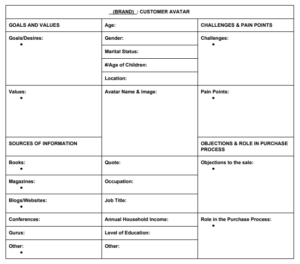
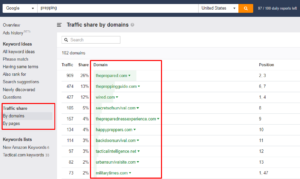

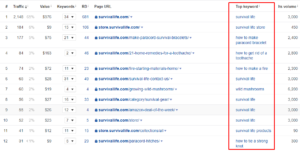
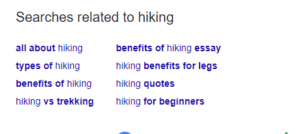
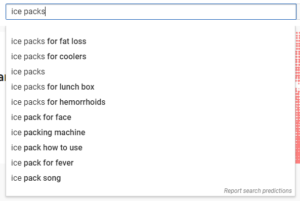
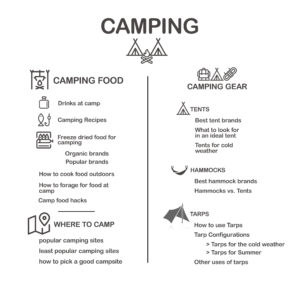
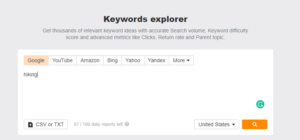






Thanks, this is excellent and very comprehensive, a good example of practice what you preach :)
Thank you for your comment, I hope you have enjoyed the article.